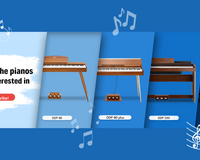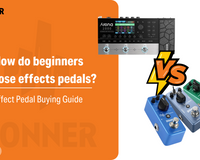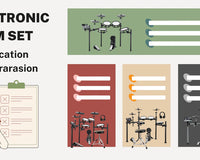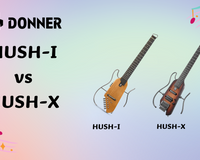The beauty of music lies in its variety and constant innovation. Guitarists are able to create colorful tones by manipulating different effects. If you're in a music store, you may be faced with a dilemma when it comes to choosing between Multi-effects Pedals and Single Pedals. Here, we'll compare the most important differences between the two, and provide beginner consumers with factors to consider when shopping.
1. Functional versatility vs. specificity
Combination effects units typically integrate a wide range of sounds in a single compact unit, offering distortion, modulation, delay, and many other effects. Their power lies in their versatility and the ability to create an infinite number of kits and setups with a single unit. the DONNER Arena 2000 is a great integrated effects pedal for the money, with a powerful built-in chip that can algorithmically simulate up to 278 tonal effects, and a chain of 10 effects modules that form an analog monoblock pedal chain that makes it easy to seamlessly switch from one tone to another, with integrated effects. The 10 effect modules form a single analog pedal chain that allows for seamless switching between tones, integrated looper, tuner, and other auxiliary functions, and comes with a wow pedal, making it an excellent choice for a portable pedal.
 Arena 2000 Tone Effects Chain
Arena 2000 Tone Effects Chain
In contrast to single-block effects, which usually offer only one type of effect, focusing on a specific tone or function, DONNER has developed a wide range of high-quality tone single-block pedals such as the Blues Drive, Echo Square, and Triple Threat, developed by DONNER's tone team. DONNER tone team research and development, restore the legendary sound of various classic single block.
2. Pure and Composite Tones
Tone purists may favor monoblock effects because they offer a more focused and higher quality sound in some cases. Because they only have to deal with one effect, monoblock effects tend to have better sound quality in their area of expertise.
Integrated effects, on the other hand, while offering a variety of tones on one device, may not be able to match the sound quality of monoblock effects for some specific effects. However, beginners often do not have a "clear understanding" of tone, and they may not even be able to tell the difference between "overdrive" and "distortion" for the time being, so the quality of the tone itself needs to be weighed separately. Therefore, the quality of the sound itself needs to be weighed separately for beginners.
3. Portability and Complexity
Comprehensive effects are a boon to musicians who often need to carry a lot of equipment on their travels, as they integrate a variety of effects, reducing the complexity of carrying and setting up a single piece of effects. 50 sets of well-modulated presets are shipped with the Arena 2000, and you can make simple parameter adjustments to get the tone effects you want. You can easily adjust the parameters to get the tone you want.
Setting up a monoblock can be more complicated, especially if the musician needs multiple effects and wants to switch between them quickly. Each tone needs to be switched and parameterized individually, and the routing of each tone in series and parallel needs to be carefully thought out, which can be a huge challenge for beginners.
 Guitarist Tomo Fujita introduces his Donner Peadel board
Guitarist Tomo Fujita introduces his Donner Peadel board
4. Flexibility and customization
Monoblock effects offer more flexibility and customization, allowing musicians to combine them according to their needs and tonal preferences. It also means that updating and upgrading individual effects becomes easy, allowing you to build and refine your effects suite incrementally.
However, integrated effects usually come with preset settings and parameters, and while customization and saving of settings is also possible, upgrading and modification may not be as convenient as with individual effects.
Consumer Buying Guide
When you are faced with a choice, consider the following:
● Budget: typically, a combined effects unit will be cheaper in price than multiple single-block effects units. Sort out your budget and then make a decision based on what you can afford.
● Needs: Think about what types of effects you need. If you only need a few basic effects, a monoblock may be sufficient; if you want to experiment with multiple effects, a synthesizer may be a better choice.
● Sound quality: Sound quality is one of the most important considerations. If possible, audition the tones of different effects in person and read reviews and feedback from other consumers.
● Portability: If you often carry your equipment on the go, or have a high demand for portability, choosing an integrated effects unit may be more suitable for you.
● Experience and operation: Different effectors will vary in operation. Some users may
When choosing between an integrated effects unit and a single-block effects unit, the most important thing to do is to analyze your own needs, audition different products, and make a choice that you are comfortable with. Either way, the ultimate goal is to help you realize your musical dreams.
 Ir directamente al contenido
Ir directamente al contenido





















